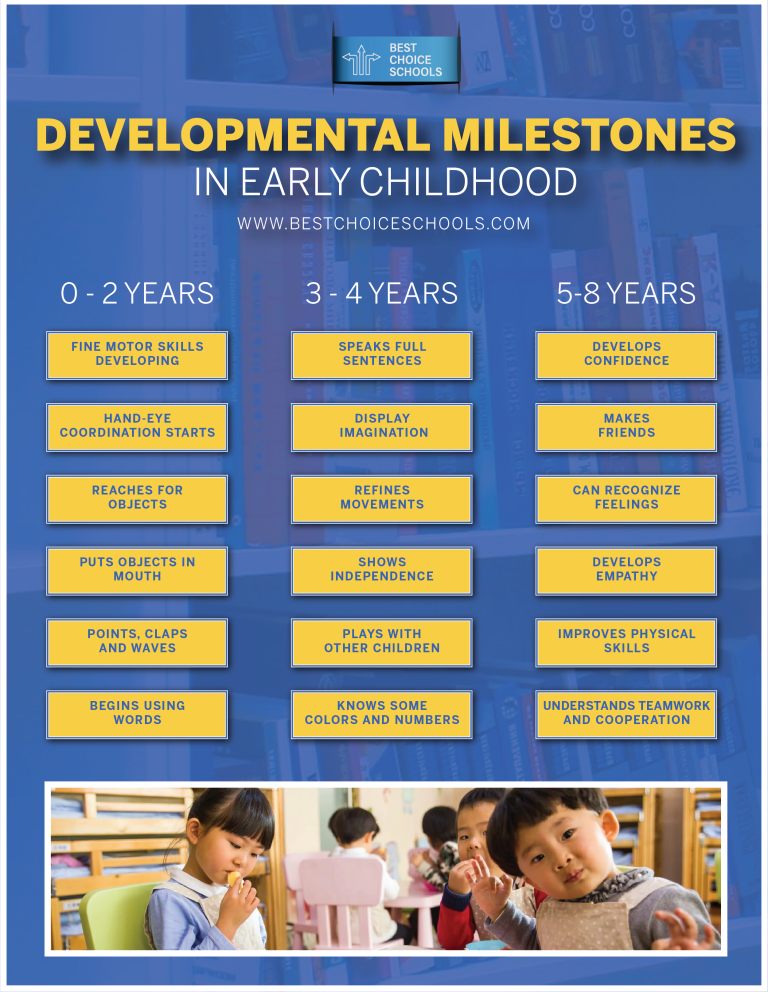How to Enroll Toddlers in Preschool: Guides For Parents

To enroll a toddler in preschool, contact local schools to inquire about openings and their enrollment process. Gather necessary documents, such as birth certificates and immunization records, before applying.
Choosing the right preschool for your toddler marks a significant milestone in your child’s educational journey. The process involves researching local preschools to understand their philosophy, curriculum, and the overall environment they offer. Parents should prioritize visiting schools to observe classrooms and speak with staff, ensuring a fit aligned with their values and expectations.
Early preparation is key, as popular programs may have waiting lists. Embrace this opportunity to set a strong foundation for your child’s love of learning, social growth, and readiness for the adventures of education. Remember to consider location, class size, and staff qualifications to make an informed decision that benefits your little one’s developmental needs.
Researching Preschool Options
Embarking on the journey of finding the perfect preschool for your toddler marks a significant milestone. Researching preschool options thoroughly can pave the path for your child’s early education and set the foundation for a love of learning. It’s vital to approach this step methodically, considering the preschool’s proximity to your home or workplace, as well as the richness of their curriculum. Ensuring your child is enrolled in an institution that aligns with your educational values and goals is paramount.
Locating Nearby Preschools
Beginning your search locally can greatly simplify the transition into preschool for both you and your toddler. Identify nearby preschools by:
- Consulting friends and family for referrals.
- Searching online for preschools within a convenient radius.
- Contacting local childcare resource and referral agencies.
- Visiting community boards or social media groups for recommendations.
Compile a list of potential preschools and schedule visits or virtual tours to get a sense of their environments.

Evaluating Preschool Curriculums
Each preschool comes with its own unique approach to early education. When evaluating potential options, consider:
| Educational Philosophy | Curriculum Structure | Child Development Focus |
|---|---|---|
| Montessori, Reggio Emilia, Waldorf, or traditional? | Is the curriculum theme-based, play-based, or academic? | Does it address social, emotional, cognitive, and physical development? |
Request curriculum overviews from the preschools to understand their educational objectives and to assess their alignment with your child’s learning style and needs. Ensure the programs foster a safe and nurturing environment that encourages curiosity and creativity.
Applying To Preschools
Embarking on the journey of enrolling your toddler in preschool is an exciting time for any parent. It marks the beginning of a new chapter in your child’s development. The application process can often be as learning-filled for parents as preschool will be for the child. Let’s explore the key steps you’ll take to apply to preschools, ensuring your little one gets the best start on this educational adventure.
Preparing Necessary Documents
The first step in applying to preschools is to gather all necessary documentation. This can include, but is not limited to:
- A completed application form.
- Proof of child’s age, typically a birth certificate.
- Immunization records, as preschools will want to ensure your child’s vaccines are up to date.
- Any medical records or special needs information that will aid the preschool in providing the best care for your child.
Double-check the specific requirements of each preschool, as they can vary. Organize these documents early to avoid last-minute scrambles, and consider making extra copies should they be needed during the application process.
Attend Open Houses And Tours
Visiting preschools in person is a must. Open houses and scheduled tours give you and your toddler the opportunity to:
| Experience | Benefits |
|---|---|
| Meet the teachers and staff | Build rapport and ask questions |
| See the facilities | Gauge the cleanliness, safety, and learning environments |
| Observe classes | Understand the curriculum and teaching style |
Remember to inquire about the enrollment process during your visit. Some schools may have waiting lists or specific enrollment periods. Taking this proactive approach will demonstrate your interest and could be a deciding factor in your child’s acceptance.
Financial Planning For Preschool
Embarking on the educational journey with your toddler is an exciting milestone, but with that excitement comes the responsibility of financial planning for preschool. Apart from the daily joys and challenges of parenting, ensuring that you’re economically prepared for this next step is crucial. Efficient financial planning helps secure a bright educational start for your child without putting undue strain on the family budget. Let’s explore some strategies to manage your finances as you prepare to enroll your toddler in preschool.
Exploring Financial Aid Options
Investing in your child’s early education need not be overwhelming with the right assistance. Numerous financial aid options are available to help families with preschool costs. Understanding these possibilities is the first step in effective preschool financial planning:
- Scholarships: Some preschools offer scholarships based on merit or family need. Research local options and application requirements.
- Grants: Look for grants aimed at early childhood education through governmental or non-profit organizations.
- Subsidies: Government programs may cover a portion of preschool expenses for qualifying families. Check eligibility criteria for programs like Head Start.
- Sliding Scale Fees: Certain preschools adjust tuition based on family income. This ensures affordability for all income levels.
- Tax Credits: Parents may be eligible for child and dependent care tax credits, which can reduce your tax burden and help offset preschool costs.
Researching these options thoroughly and applying early is vital, as some aid is first-come-first-served.
Setting Up A Preschool Budget
Crafting a budget dedicated to preschool expenses helps parents stay financially organized and prepared. Consider the following steps to set up a sound budget:
- Determine your monthly income and calculate how much you can realistically allocate to preschool expenses.
- Compile an extensive list of all potential preschool costs, not just tuition but also registration fees, materials, and any additional services.
- Identify areas in your current expenditure where savings can be made to free up funds.
- Set up a separate savings account specifically for preschool costs to prevent mingling with other finances.
- Maintain regular reviews of your budget, adjusting as needed to ensure consistency and to avoid shortfalls.
By committing to a budget, you will be able to comfortably afford your child’s preschool fees and still maintain overall financial well-being.
Orientation And Transition
Welcome to the journey of guiding your little one into the exciting world of education! Orientation and Transition are pivotal steps in starting preschool. They lay the foundation for a child’s adjustment and future success in this new environment. In the upcoming sections, we will delve into essential strategies to ensure your toddler is fully prepared for the exciting first day and adapts seamlessly to the preschool routine.
Preparing For First Day Of School
The first day of school can be a mix of excitement and anxiety for both parents and children. Preparing in advance can ease these feelings, paving the way for a smooth start. Let’s explore practical steps to ready your toddler for their big day:
- Visit the Preschool: Before the term begins, schedule visits to familiarize your child with the new setting.
- Meet the Teachers: Introduce your toddler to their teachers to establish a sense of trust.
- Discuss the School: Talk positively about school, emphasizing the fun aspects like making friends and learning through play.
- Establish a Routine: Get your child used to a regular schedule similar to the preschool’s to make the transition smoother.
- Set Clear Expectations: Clarify what will happen at school, such as playtime, learning, and snack times, to reduce surprises.
- Practice Independence: Encourage self-help skills like washing hands, using the toilet, and managing clothing.
Remember, starting school is a significant milestone. Show your support and share in your child’s excitement to build a positive outlook towards learning.
Adapting To Preschool Routine
Consistency and structure are key components for a child to thrive in preschool. Establishing a familiar routine can significantly ease your toddler’s adjustment period. Here’s how you can assist in this transition:
- Establish Consistent Wake-up and Bedtimes: Aim for your toddler to follow a consistent sleep schedule to ensure they are well-rested for school.
- Mealtime Schedules: Align home meal times with those at preschool to accustom your toddler to the rhythm.
- Steady Morning Routines: Start each day with a calm and predictable pattern that leads up to leaving for school.
- Stay Connected: Touch base with teachers regularly to track your child’s progress and discuss any concerns.
- Participate in School Activities: When possible, get involved in events and volunteer opportunities to show your support.
- Patience is Key: Adaptation takes time. Offer comfort and reassurance as your child navigates this new chapter.
Communication with your child is crucial during this time. Encourage them to share their preschool experiences, listen intently, and validate their feelings. This fosters trust and can help highlight areas where they might need additional support or encouragement.
Maintaining Parental Involvement
Enrolling your toddler in preschool is just the beginning of their educational journey, and as a parent, your ongoing involvement is crucial. Active participation in your child’s preschool experience can foster a deeper bond, reinforce learning, and ensure that your child gets the most out of their early education. Let’s explore how you can remain effectively involved.
Building Relationships With Teachers
Forging a strong connection with your child’s teachers can enhance your insight into the preschool environment and your toddler’s progress. Here are some strategies to build that relationship:
- Schedule regular meetings to discuss your child’s development and address any concerns.
- Participate in classroom events and volunteer activities when possible.
- Express appreciation for their efforts. A simple thank you can go a long way in building a positive rapport.
Supporting Toddler’s Development At Home
Complementing your child’s preschool education at home is pivotal for continued learning and growth. Follow these steps to support their development:
- Engage in educational activities that mirror the preschool curriculum, like reading or puzzles.
- Establish a routine to help them adapt to the structure of a school day.
- Encourage independence with simple, age-appropriate tasks to boost their confidence and self-reliance.
Frequently Asked Questions Of How To Enroll Toddler In Preschool
What Age Is Best For Preschool Enrollment?
Preschool enrollment typically starts at ages three to four. This timeframe aligns with a child’s developmental readiness for structured play and learning in a group setting. Always check specific preschool requirements as ages can vary.
How Do I Choose The Right Preschool?
Choosing the right preschool involves researching the school’s philosophy, credentials, curriculum, and facilities. Visit in person, meet the teachers, and consider how the school’s values align with your parenting style. Prioritize safety, learning approach, and your child’s comfort.
What Documents Are Needed For Preschool Enrollment?
Required documents usually include the child’s birth certificate, immunization records, and proof of residency. Some schools may also ask for a physical exam report. Always check with the specific institution for any additional forms or documents they might require.
Are Preschools Equipped For Special Needs?
Many preschools are equipped to support special needs children. It is crucial to discuss your child’s specific needs with the school administration beforehand to ensure they can provide the required support, such as specialized staff or individualized learning plans.
Conclusion
Embarking on your toddler’s educational journey marks a milestone. To smooth the preschool enrollment process, timely research and preparedness are key. Remember, selecting the right program sets the foundation for your child’s academic success. Start early, stay informed, and your little one will thrive in their new learning environment.

Emma combines her teaching experience with her writing skills to produce engaging and informative content. She covers a range of topics, from classroom management to innovative teaching techniques.





